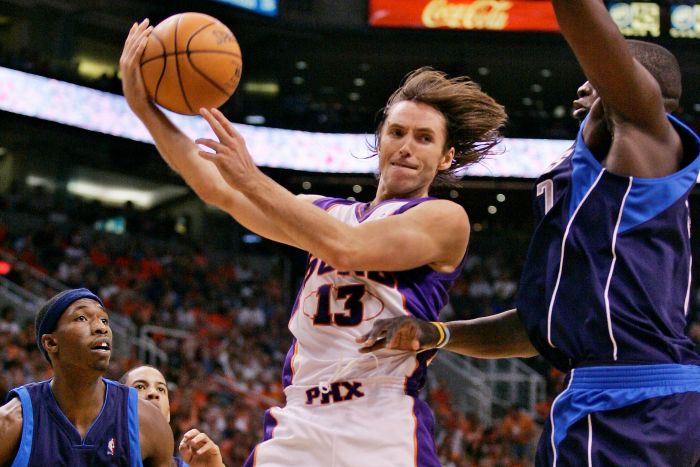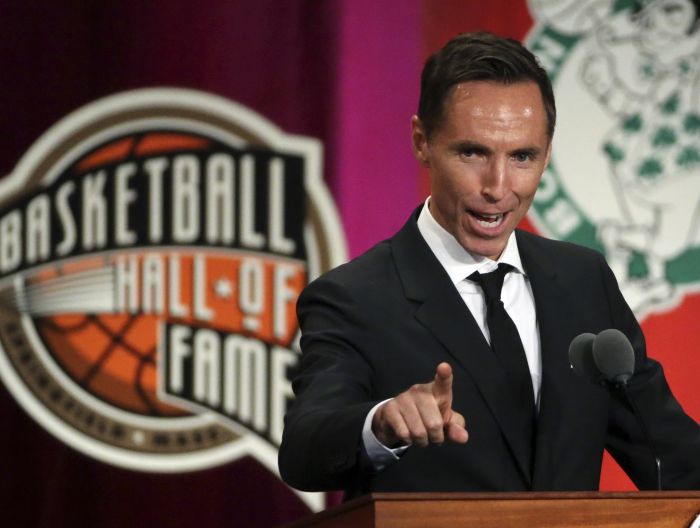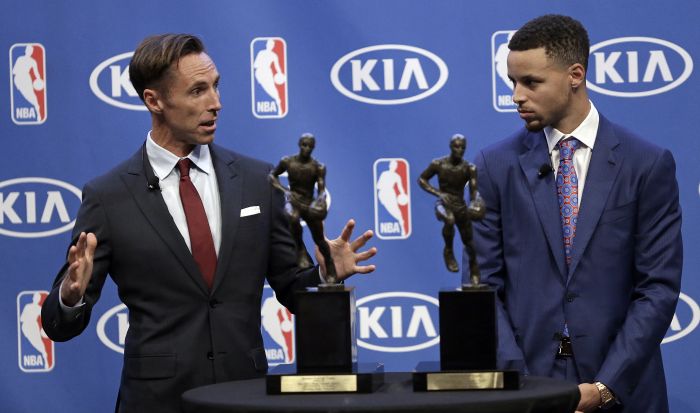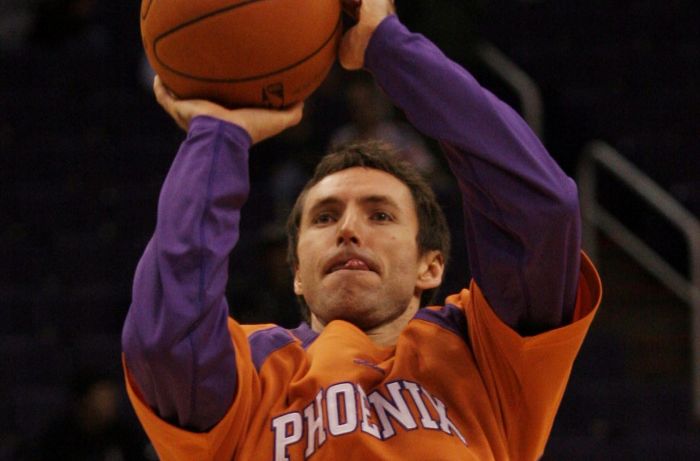
Let's rewind time to G4 in the second round of the 2005 playoffs, when the Phoenix Suns faced the Dallas Mavericks. The third quarter is about to end, and Steve Nash is having the best scoring performance of his career:In that quarter alone, he made 9 of 12 shots and scored 23 points - and the record is still in progress.With only 8.6 seconds left, Nash dribbled to the frontcourt and received a screen from teammate Shawn Marion. He faced his former teammate Dirk Nowitzki. In the last three seconds, the long-haired brother faced his best friend German from outside the three-point line; in two seconds, Nash dribbled the ball and took a few steps back; in the last second, an indistinct sound came from outside the TV broadcast frame. ——"Shoot!" This roar almost certainly came from head coach Mike D'Antoni, but the game ended when Nash hesitated.
The reigning MVP's slaughter performance in the third quarter was almost an "out-of-body" experience for him; for any NBA player, a 23-point burst in a single quarter can be regarded as one of the highlights of his career; but for For Nash, who is the first passer, it is quite contradictory:He doesn't play like himself. For a Hall of Fame player known for his superior sense of time, vision and mastery, losing his sense of time means losing everything. In the end, Nash scored 48 points, which was almost one of the classic scoring performances of his career; but in the end, the Suns lost by 10 points.

Fast forward to 2018, when the great point guard was enshrined in the Basketball Hall of Fame, it seems strange to suddenly look back on this game; however, Steve Nash always leads the trend, and in the past two months, he has been asked about his uniqueness When talking about his style of play, he is always quite candid about the fact that "the direction of his career may be different." During his time as a well-known sports media"Bleacher Report"written byFootball articlesIn , Nash used Cristiano Ronaldo’s huge egocentrism as a backdrop to comment on his own athletic career:
"When I saw Ronaldo and his aura, I thought I wouldn't want to get too close to him at first, because this aura exposed my weakness: that is, I am afraid of taking action myself. I can take these responsibilities, but I I don’t like to make my own decisions, and perhaps my biggest weakness is the lack of a stronger self.”
In Steve Nash's heyday, he was the soul of the "small ball" system. This concept and trend, which is several years ahead of the league, has also created an even more obsessive "rhythm & space" offensive style in the future. You must know that the NBA's game pace in the 2003-04 season was one of the slowest in history; even under the circumstances at that time, Nash was still at the helm of the Mavericks' powerful offense, and the overall offensive speed was as much as 10 points higher than the league average per 100 possessions; this The offensive efficiency of this Mavericks team, if placed in the league last season, would not even rank in the top five. Before Nash was officially inducted into the Hall of Fame, Nash and his two mentors who had the greatest influence on him almost said in unison with regret:They can also push the bar further.
Further reading:Exclusive interview with Grant Hill: With today’s NBA game pace, it’s easier to get three dollars
D'Antoni, the pioneer small ball coach who invented the "seven-second rush", looks back on the past and regrets why he didn't force Nash to take more shots from beyond the three-point line. After all, his career three-point shooting percentage is as high as 42.8%! The genius before him, Don Nelson, the former Mavericks head coach, set a low standard of 10+ shots per game.Nelson even threatened Nash If he did not reach a certain number of shots, he would be benched or even fined; at that time, he had the vision to turn Nash into Steph Curry; however, about ten years later, Curry, who had just entered the league, was only considered a college student. level player.
"Nellie kept reminding me to be more aggressive and score with the ball, which started my professional basketball career."Nash told reporters, "But I have never raised my shot count to the level of today's league. Maybe I should take 20 shots a game, which should be more reasonable!"

It may be hard to avoid the thoughts, all the what-ifs, the questions that critics say "what Nash might have accomplished if..." have already been settled. When Nash signed a contract with the Golden State Warriors as a player development consultant before the 2015-16 season, he seemed to have known that his legend would always overlap with Curry's, so he worked with Steph to help Steph reach the level that Nash has become. A new realm that has never been touched before. Curry is now in his thirties, which is exactly the age when Nash returned to the sun and reached his peak again. So last month,The Warriors have also recruited Rick Celebrini as the new CEO of the team's sports medical performance department.Celebrini was the driving force behind Nash's physical fitness, and Nash also praised him.
I'm always thinking: When we imagine Steve Nash averaging 30 points per game in his prime, just like his mentor D'Antoni regretted, is this a false issue? If the above if comes true,Will Nash still have fun playing ball?While Curry has proven he can score a ton of points with ease, the brilliance of Nash's style comes from his complete control of everything on the court. When he was spinning around the basket again, people always thought he was planning something. It was an ambition passed down from football——Even though there are many defenders around him, he still has complete control of the court.
He established a concept:The joy of basketball should be the root of everything, not a by-product of success; yet he was able to achieve such extraordinary achievements without changing his style of play—or even his own nature..
Let’s go back to the situation discussed at the beginning of the article: the last wave of possession in the third quarter of G4 in the second round of the 2005 playoffs. How would it have been played in 2018? Marion might set up a screen farther out, and Nash might start sniping when he and Nowitzki are at distance, and Nash's trademark might be reworded: a simple, wide-open dribble from beyond the arc. The last three-point shot. This is a skill that every team's starting point guard possesses today; it just proves that the concept of Nash's system is so clear, and he is almost the origin of the basketball trend in the past 10 years.
Further reading:A life-or-death battle between NBA superstars? Point guards finally enter their "golden period"

Nash could very well have been the Curry of that generation, but he didn't end up embarking on that path. If he does go down this path, then the significance of his joining the Hall of Fame cannot be as huge.He became an elite among the elite in the Hall of Fame not just because he was a great point guard in history, but because he was a pioneer in the transfer of basketball paradigms.. His career average of 14.3 points per game further echoes the above meaning: he cannot do this alone. The guidance and encouragement given by two innovative and visionary coaches, coupled with the defensive rule changes in the league at that time. His success cannot be defined by one person's achievements, but by how he changed the trajectory of the league.
If he really produces data like Curry, perhaps we will give him a different career evaluation: perhaps more like Gary Payton or Karl Malone, who has historical talents, but can only stand with personal glory. Even as much hindsight continues to flow, we can't imagine a more fitting way for Nash to be remembered -A symbol of a great player who is willing to share, a prototype of a trend that changed the world of basketball.
Reference for compiling this article:What if Hall of Famer Steve Nash had turned up the volume?
Reference for compiling this article:Steve Nash Never Had to Be Anything More Than Himself